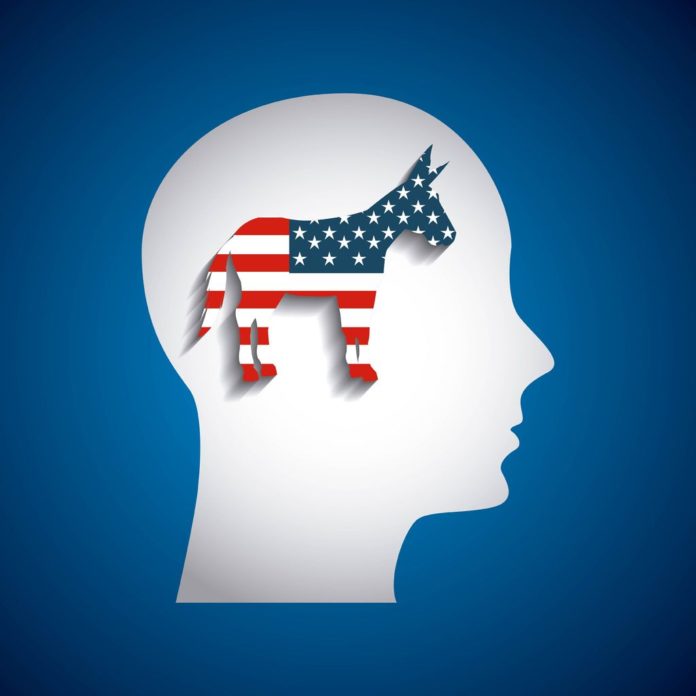When Democrats across the country woke up on the morning after the 2016 Election Day in the U.S., they found their party out of power in government across the board. The White House, both chambers Congress, and soon the Supreme Court would all be controlled by Republican majorities.
To many Democrats, this was absolutely baffling. The media had by and large been selling the story that Hillary Clinton would inevitably be the President essentially since 2014. Polling experts projected that Democrats had a really good chance to flip the Senate and maybe even the House.
But that whole fantasy came crashing down all at once, and what followed might be best described as a collective state of shock for many Democrats. The democratic base is very diverse, encompassing people of color, younger people, LGBTQ+ people, college-educated people, immigrants and other demographics. However, the real power players behind the Democratic party—the top-ranking officials and the donor base—is largely made up of a very wealthy and well-educated city-dwelling elite.
So then, much of the central messaging, strategy and tactics of the Democratic party are designed by people who by nature are rather out of touch with the ordinary American or the rural American. Democrats often feel very passionate about their political beliefs and moral integrity, but they don’t always do a great job of seeing where their party has gone wrong. While the voting base followed the lead of an out-of-touch elite who essentially told Democrats that they couldn’t lose, the party began more and more to lose favor with people.
Democrats across the country are now scrambling to figure out where they went wrong, what they need to do next and how they’re going to resist the coming years of Republican rule. But poll numbers out now are looking really grim for any hope of salvaging this party.
Shaun King, a prominent journalist and media commentator known for his hardline progressive stances, penned an article on the Democrats’ dismal approval ratings in the New York Daily News in early March. The poll he pulled, from Suffolk University, gave the following favorable/unfavorable ratings for some dominant political entities:
Pence: 47%/35%
Trump: 45%/47%
Trump: 45%/47%
GOP: 37%/48%
Media: 37%/50%
Dem Party: 36%/52%
Hillary: 35%/55%
Congress: 26%/52%
Those numbers must have Democrats shaking. That is unless Shaun King was right when made this claim:
“As a general rule, the Democratic Party doesn’t listen well and struggles to hear the truth about itself.”
To be certain, the Democratic Party is in the middle of a heated internal debate about the future of the party. Progressive officers are being elected to Democratic organizations across the country, and commentators and voters are pressuring Democrats to move in the direction that the progressive primary candidate Bernie Sanders urged the party to move in.
But there is still a large percentage of Democrats from the top ranks to the bottom who still don’t seem to be getting it. Many of them believe that the chaos that is coming with the Trump administration will undoubtedly put them back into power in two to four years. They are counting on the failures of Donald Trump to elevate them back to a majority, but they aren’t trying to diagnose the failures of their own party.
Those poll numbers suggest that this a tactic that simply will not work. As of right now, Donald Trump and the GOP may be incredibly unpopular, but it doesn’t compare to the level of disdain the American people have for the Democratic party.
We can take those numbers apart and try to figure them out all we want. The 64% of people who don’t view the Democratic party favorably are probably made up of a Republican base who has felt rejected by the Democratic elite for years, as well as a percentage of the progressive Democratic base that felt rejected by their own party when Bernie Sanders lost the nomination.
But no matter who those people are and how they’re “most likely” to vote in two to four years is really a lot less important than figuring out and fixing the problem that has made the Democratic party so unpopular. Indeed, if Democrats hope to put their ideals into office with the next election, these poll numbers suggest it’s time to jump ship.
Jumping ship doesn’t have to mean leaving the party and its infrastructure entirely. It can also mean jumping ship from the status-quo, neoliberal, center-left politics that the Democratic party has represented for decades and rebuilding the party from the ground up.
The bottom line is that Democrats cannot afford to ignore the sickness of their own party if they want any chance of winning votes. Americans have voiced their opinion on the Democratic party, and it’s not good. It’s time for that party base to reject the traditions of their party, vocally and aggressively chase reform, and perhaps even begin to build a new political party or infrastructure outside of the party that has failed them.




